1. Pidgeon Pose
Body
There's almost no escaping it — at some point in your life, you will experience back pain. It happens to nearly everyone. In fact, one study found that 84% of adults in the United States have reported low back pain, and back pain is the No. 1 cause of missed work throughout much of the world.
The good news: back pain is manageable. Modern medical practice is moving away from the use of opioid medications and invasive procedures like injections and surgeries. So what is the preferred treatment for back pain? Exercise!
One form of exercise shown to be effective in treating low back pain is yoga. Yoga's benefits are multiple: it reduces stress (which is a known risk factor of low back pain), helps your spine stay nice and mobile, and strengthens your spine and core muscles.
Whether you have low back pain, or are just trying to keep your spine feeing great, here are five poses for you.
This pose stretches the hip and buttock muscles that often contribute to achy backs.
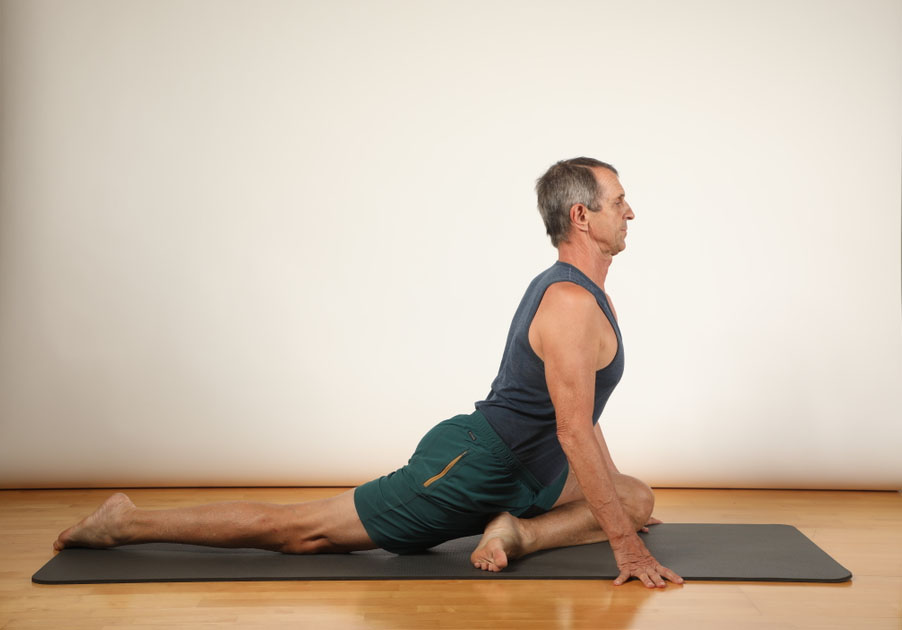
Here's how to do it:
- From your hands and knees, bend your right knee while rotating your hip out so that your right ankle slides behind your left wrist.
- Rest the outside of your right shin on the floor.
- Extend your left leg back with a straight knee, hip rotated slightly inward, and left upper thigh resting on the floor.
- With the support of your arms, lower the right buttock to the floor
- With your hands still supporting you, settle into the hip stretch: walk the hands back alongside the hips, or place the hands on blocks next to the hips.
- Lengthen your spine, extending the crown of your head up to the ceiling.
- Hold for 5-10 breath cycles, then switch.
Or, if you don’t think your body moves this way, try this modification:
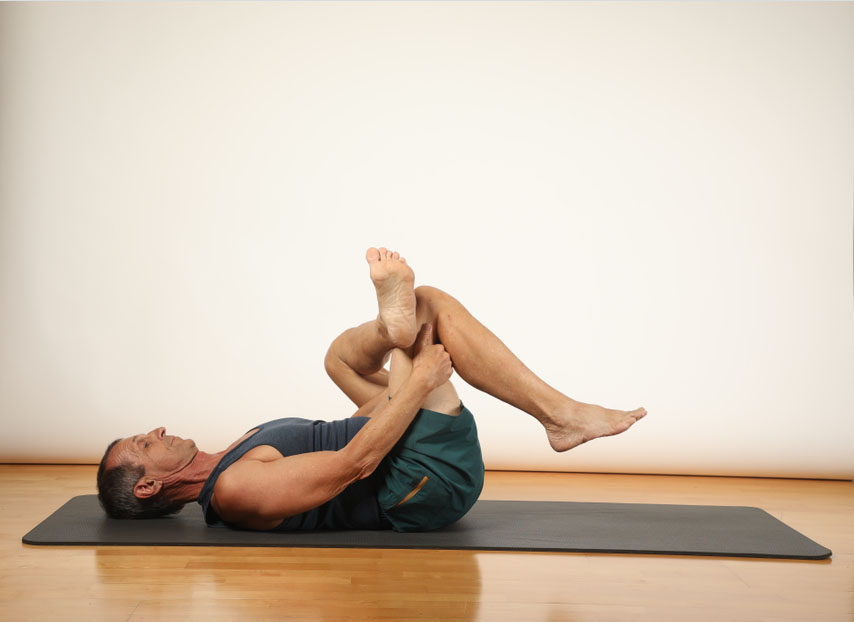
- Starting on your back, bend your knees and place your feet on the floor, walking them under the knees, hip-distance apart.
- Bend the left knee into the chest and cross your left ankle above your right knee. In this manner, you will create a “figure 4” with your legs.
- Draw your right knee into your chest and thread your left arm through the triangle created by your ankle and knee.
- Interlace your fingers around your right shin or the back of your right thigh, and draw your knees close to your chest.
- Your head and shoulders should be resting on the ground. If they need to come off the floor to catch hold of the shin or thigh, you can use a strap to draw your legs into the body.
- Hold for 5-10 breath cycles, then switch sides.
2. Plank Pose
Body
This pose is a great way to strengthen your core, which helps in stabilizing the spine.
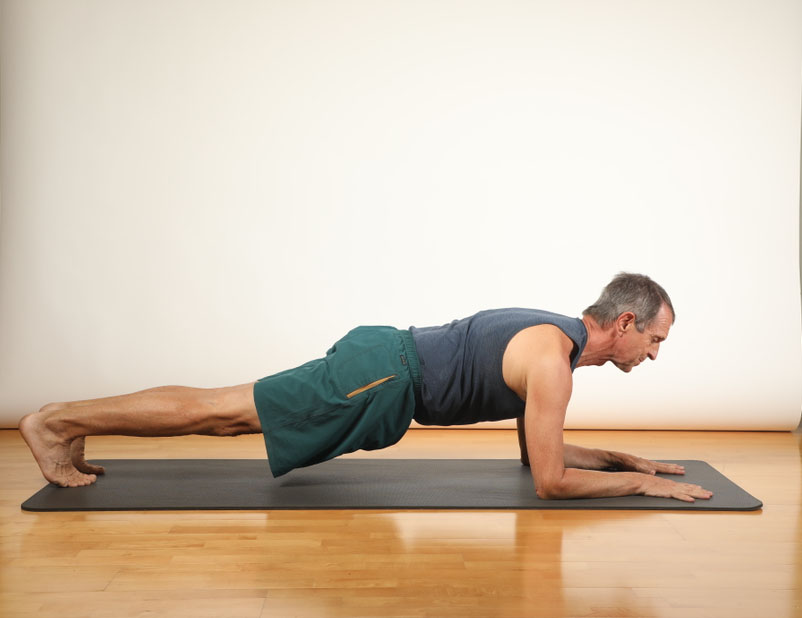
- Starting on your hands and knees, lower yourself down onto your elbows and step your feet back so your legs are straight.
- Align your body in a straight line from your head to your heels.
- Engage the abdominal muscles in and up.
- Press into your elbows and hands, separating the shoulder blades.
- To maintain a neutral neck position, keep your gaze two feet in front of your hands on the floor..
- Be sure your hips do not sag or elevate, and are in alignment with the chest and legs.
- Hold for 5-8 breath cycles.
For an extra challenge, try performing the plank on your hands rather than your elbows.
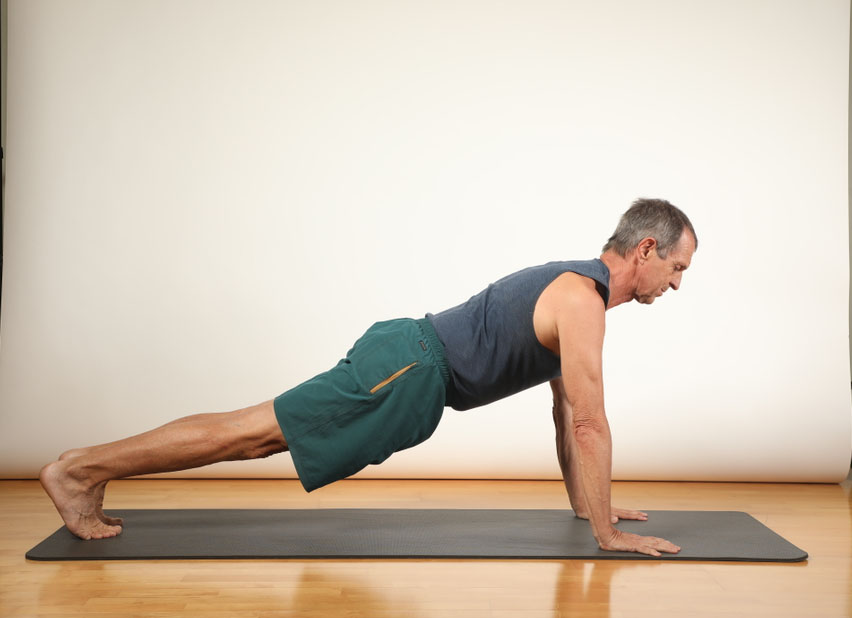
3. Half Lord of the Fishes Pose
Body
Your spine is capable is moving in several directions, and this pose is a great way to gently improve your spine’s rotation.
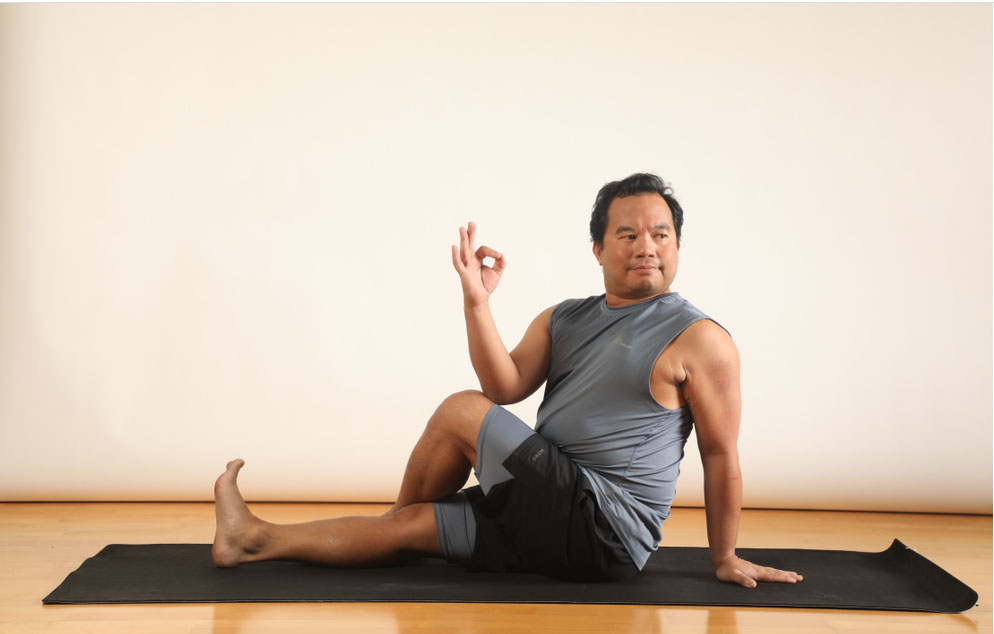
- To start, sit with your knees straight and legs together.
- Use your hands to lift your right leg. Step the right foot to the outside of your left knee.
- Hug your right knee into your body with your left arm or outer elbow.
- Place your right hand behind your back for stability and leverage for your twist.
- Make sure both of your sit bones remain grounded. Don’t let one hip “hike up.”
- Inhale and elongate the spine, lifting the crown of your head toward the ceiling.
- Exhale and rotate the torso to the right as you hug your knee in.
- Continue to inhale and exhale into your twist, elongating your spine with every inhale, and twisting deeper with every exhale.
- Hold for 5–8 breaths.
- Untwist the spine, straighten the legs and switch sides.
4. Cobra Pose
Body
By gently bending the spine backward, this pose helps to counteract the high amount time many of us spend bent forward in our day-to-day lives.

- Start by lying on your stomach, with your legs straight and hands directly under your shoulders.
- Scoop your elbows in toward your body and spread your fingers wide to create a firm foundation with your hands.
- Press into your hands to lift your chest as you engage your abdominal muscles.
- Draw the shoulder blades down your back as you begin to straighten your arms. It’s OK to maintain a bend in your arms for the comfort of your back.
- Engage your abdominal muscles as you lift up your chest and continue to draw your shoulder blades down your back.
- Hold for 5–8 breath cycles.
Be sure to only lift your chest as high as you can while keeping your hips in contact with the mat. You should feel a comfortable stretch in your lower back.
5. Child's Pose
Body
End your session with this pose to decompress and length the spine.
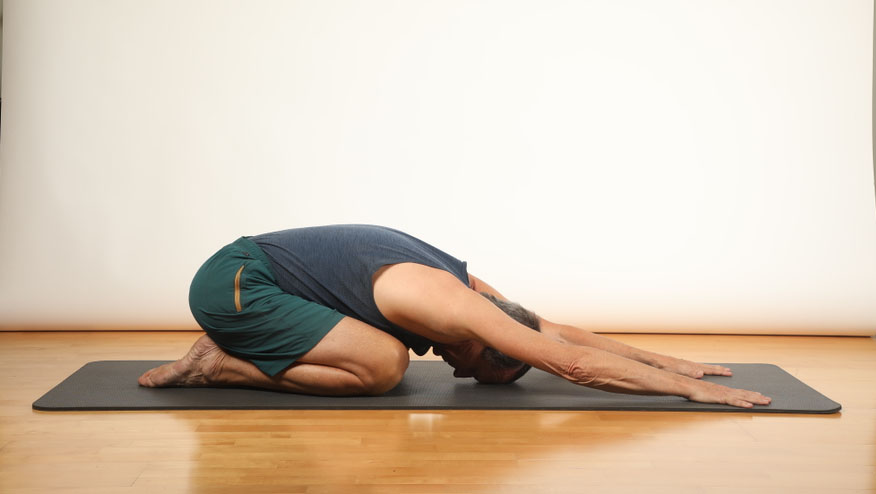
- Start on your hands and knees.
- Adjust your feet so you heels are almost touching one another. Shift your weight back to bring your sit bones to resting on your heels.
- Walk your hands forward to straighten out your arms.
- Lower your chest onto your thighs, and lower your forehead to the floor.
- Rest your elbows, forearms and palms on the floor in front of you. (Or, stack your hands under your forehead to ensure your neck is comfortable.)
- Direct your breath to your lower back and side ribs. Expand the back of your body when you inhale and release into the mat on your exhale.
- Hold for 10 breath cycles.
If you are new to yoga, try adding these poses to your once or twice a week, working up to three times per week. Additionally, if you feel your back pain increasing or your back stiffening up, try these poses before reaching into the medicine cabinet.
Body
If you are uncertain where to start with yoga at home, check out this article: 5 Ways to Turn Your Home into a Yoga Studio.
Kyle Fahey received a doctorate in physical therapy from Northwestern University. He is Shirley Ryan AbilityLab’s inpatient pain management physical therapist, and co-author of Adaptive Yoga: Designed for a Variety of Bodies and Conditions.

